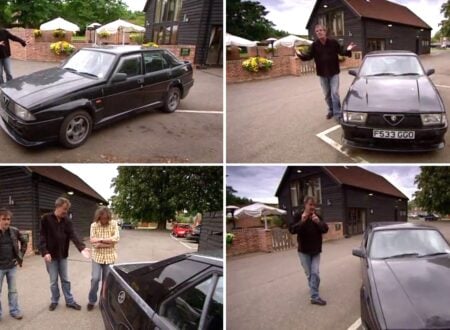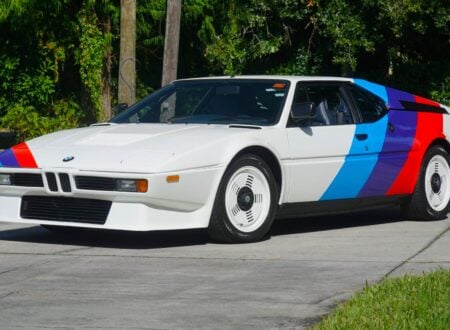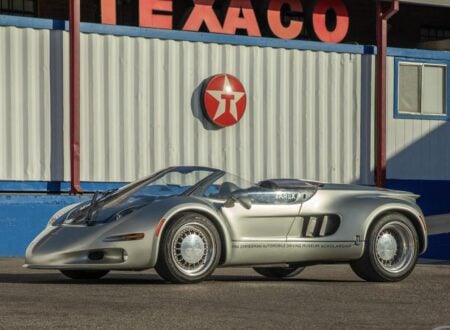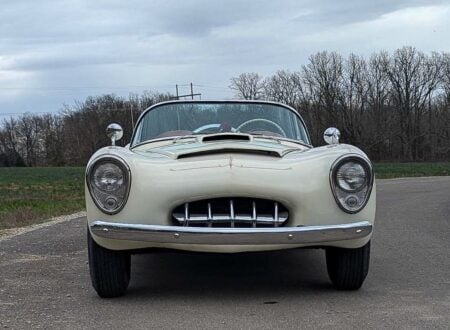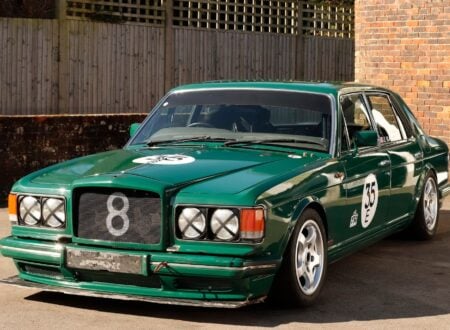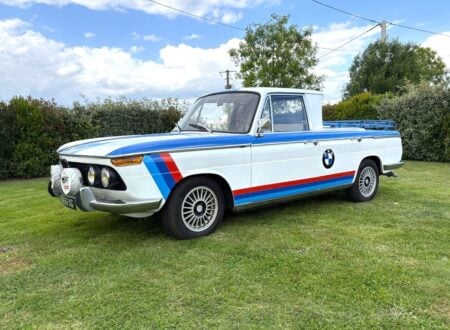This is the Starley Lotus Sprite, it’s an entirely unique creation developed by a man known as Mr Starley, a Lotus Service Dealer. The car is made up of a modified Lotus backbone chassis with an Austin-Healey Sprite bodyshell, and it’s powered by a Lotus Twin Cam inline-four.
Interestingly, Colin Chapman is said to have personally approved the use of Lotus badging on this car on the sole condition that it didn’t use Lotus colors to avoid confusion. It’s now being offered for sale in original condition with a price guide starting at £15,000 or approximately $19,700 USD.
Fast Facts – The Starley Lotus Sprite
- The Starley Lotus Sprite is a unique car developed by a Lotus Service Dealer, Mr. Starley, combining a modified Lotus backbone chassis with an Austin-Healey Sprite body. Powered by a Lotus Twin Cam inline-four, it’s now available for auction with a price starting at £15,000 ($19,700 USD).
- Colin Chapman, founder of Lotus, approved the car’s Lotus badging with the condition that it didn’t use Lotus colors. Originally built from a combination of three cars, it remains one of the most interesting custom builds, featuring a fastback roof and widened arches.
- Initially powered by a 1,299cc engine, the Starley Lotus Sprite was later upgraded to a 1,558cc Lotus Twin Cam engine with Cosworth parts, significantly improving its performance. The car competed in sprints and hill climbs but now needs restoration after years of inactivity.
- The car is eligible for vintage racing after updates to meet current FIA standards. It comes with a detailed history file documenting its origins and construction, making it a fascinating collector’s item.
Building The Starley Lotus Sprite
The Starley Lotus Sprite essentially started out as three separate cars, one containing the chassis, another containing the bodywork, and a third containing the engine. Exactly why the car was built has been lost to history, but it’s undeniably one of the most interesting specials we’ve featured in recent memory.
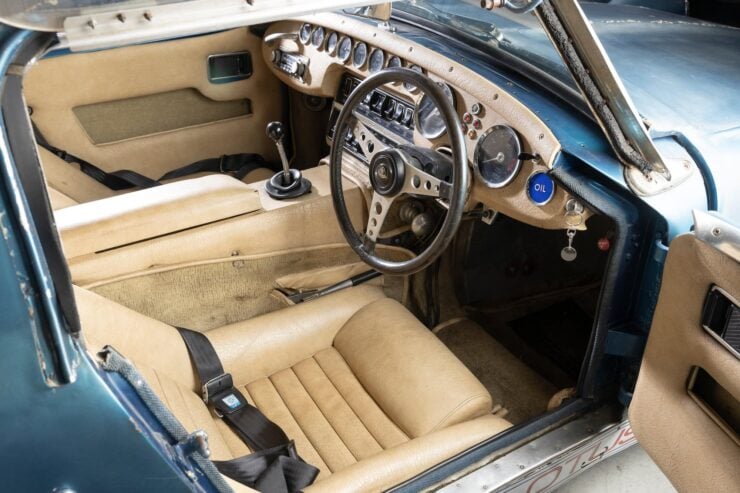 The interior of the car has a distinctly Lotus-feel to it, with the high central tunnel for the backbone chassis, the low bucket seats, and the Lotus steering wheel.
The interior of the car has a distinctly Lotus-feel to it, with the high central tunnel for the backbone chassis, the low bucket seats, and the Lotus steering wheel.The project started out when a Mr Starley, a Lotus Service Dealer, decided to combine a tubular steel Lotus backbone chassis, along with its suspension, and brakes, with a highly-modified fastback Austin-Healey Sprite Mk 1 bodyshell.
The Lotus backbone chassis was originally used with a fiberglass body, so the amount of work required to get the Sprite bodyshell to fit must have been significant to say the least. The Sprite body was given a fastback fixed roof with a small rear spoiler, the wheel arches were widened to accommodate the wider chassis track width, and a lip spoiler was fitted up front.
The distinctive “bug eye” headlights remained in place, a big part of the character of the Mk 1 Sprite, and a set of magnesium Minilite wheels were fitted. Inside, the car has a Lotus-style interior with a large central tunnel necessitated by the backbone chassis. It has two bucket seats, and so many switches and gauges that the radio had to be installed over in front of the passenger.
The car doesn’t have wind-up windows, instead there are fold-up perspex screens fitted to either side. It also has a roll bar and a reasonably large storage area in the rear behind the seats.
Swapping The Original Engine
The car was originally powered by an experimental 1,299cc engine, however this didn’t produce enough power to compete with the likes of the Lotus Elans it was racing against. Mr Starley made the decision to swap out the engine for an all-steel Lotus Twin Cam unit with a displacement of 1558cc.
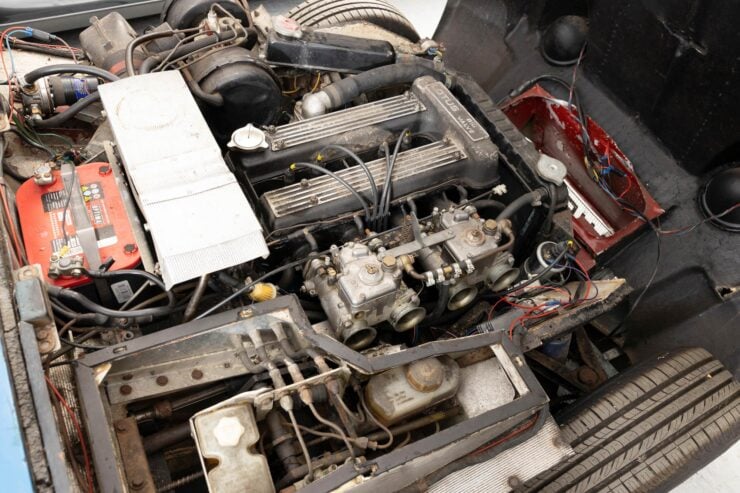 Power is provided by an all-steel Lotus Twin Cam unit with a displacement of 1558cc fitted many Cosworth parts as well as a big-valve cylinder head and twin Weber side draught carburetors.
Power is provided by an all-steel Lotus Twin Cam unit with a displacement of 1558cc fitted many Cosworth parts as well as a big-valve cylinder head and twin Weber side draught carburetors.This Lotus engine was fitted many Cosworth parts as well as a big-valve cylinder head and twin Weber side draught carburetors. Power was sent back to the rear wheels via a Lotus 4-speed transmission and a Borg & Beck clutch.
The car was completed in 1972 and assigned the UK license plate “AUF1L” which would likely have some significant monetary value on its own due to the fact it sounds like the word “awful” when said aloud.
It’s said to have competed successfully in sprints, hill climbs, and driving tests, though it’s now been sitting for many years and will require either a restoration or a comprehensive recommissioning.
One-off specials like this always attract plenty of interest at auction, and this one comes with a history file about its origins and construction, which I’m sure will make fascinating reading.
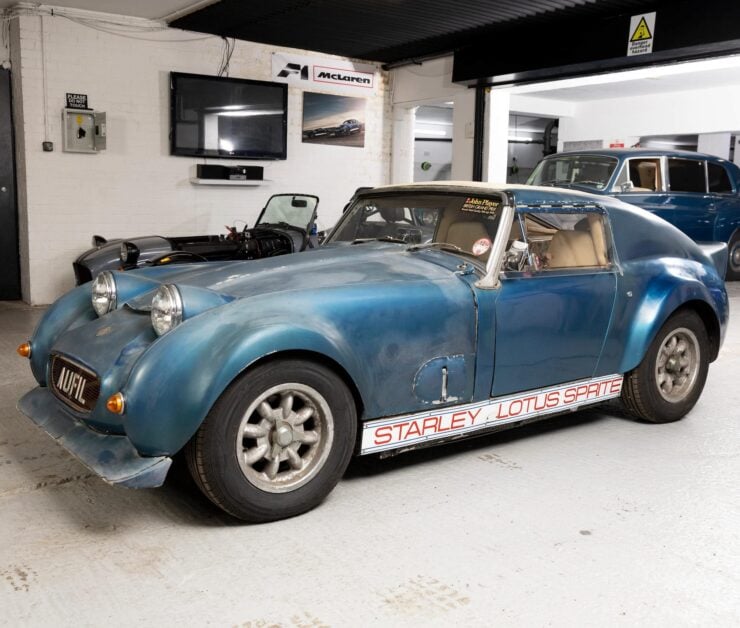 The Sprite body was given a fastback fixed roof with a small rear spoiler, the wheel arches were widened to accommodate the wider chassis track width, and a lip spoiler was fitted up front.
The Sprite body was given a fastback fixed roof with a small rear spoiler, the wheel arches were widened to accommodate the wider chassis track width, and a lip spoiler was fitted up front.Due to the car’s use in competition in period it would likely be eligible for any current vintage racing series in the UK and abroad, though it would need to be brought up to current FIA standards first of course.
It’s now due to roll across the auction block with Bonhams in September with a price guide of £15,000 – £25,000 or approximately $18,750 to $31,250 USD. If you’d like to read more about it or register to bid you can visit the listing here.
Images courtesy of Bonhams


